Current events involving politics, political office holders, political candidates, world events, local events, crime and other public affairs issues are discussed. Business news items as well as science and technology issues may appear.
Search This Blog
Saturday, February 28, 2015
Old Faithful Geyser
February 28, 2015
From Yellowstone National Park:
A view of Old Faithful Geyser from Geyser Hill on a quiet afternoon last month.
From Yellowstone National Park:
A view of Old Faithful Geyser from Geyser Hill on a quiet afternoon last month.
RIP Leonard Nimoy
From NASA:
Astronaut Terry Virts captured this photo from theInternational Space Station flying over Boston, where Leonard Nimoy was born.
#RIPLeonardNimoy
Astronaut Terry Virts captured this photo from theInternational Space Station flying over Boston, where Leonard Nimoy was born.
#RIPLeonardNimoy
The Island in the Sky Mesa
February 28, 2015
From the U.S. Department of the Interior:
The Island in the Sky mesa -- at Canyonlands National Park in Utah -- rests on sheer sandstone cliffs over 1,000 feet above the surrounding terrain. Every overlook offers a different perspective on Canyonlands' spectacular landscape, like this stunning vista seen from Green River Overlook. Pic by Rowena Trapp (www.sharetheexperience.org). — at Canyonlands National Park.
From the U.S. Department of the Interior:
The Island in the Sky mesa -- at Canyonlands National Park in Utah -- rests on sheer sandstone cliffs over 1,000 feet above the surrounding terrain. Every overlook offers a different perspective on Canyonlands' spectacular landscape, like this stunning vista seen from Green River Overlook. Pic by Rowena Trapp (www.sharetheexperience.org). — at Canyonlands National Park.
Baby, It’s Cold Outside
From NASA's Earth Observatory:
Baby, It’s Cold Outside
Record-setting cold temperatures have iced up harbors and waterways across the eastern United States. Read more at http://
#earthrightnow
Baby, It’s Cold Outside
Record-setting cold temperatures have iced up harbors and waterways across the eastern United States. Read more at http://
#earthrightnow
Friday, February 27, 2015
Teach Healthier Meals in a SNAP!
From USDA:

Posted by The SNAP-Ed Team, on February 27, 2015 at 10:00 AM

Zucchini Coleslaw is a delicious alternative to sweet coleslaws. Adding salsa instead of sugar to the coleslaw sauce gives each serving more nutrients and more flavor. Photo credit: Jennifer M. Anderson.
This is the fourth installment of the What’s Cooking? Blog Series. In honor of the Let’s Move 5th Anniversary, and the commitment USDA shares with Let’s Move to promote healthy eating and access to healthy foods, this month-long series will highlight the various features of the What’s Cooking? USDA Mixing Bowl recipe website.
Attention nutrition educators helping Americans make healthy and budget-friendly choices—this edition of the What’s Cooking? Blog Series is for you! If you haven’t already heard, the Supplemental Nutrition Assistance Program (SNAP) recipes have a new home on the U.S. Department of Agriculture’s What’s Cooking? USDA Mixing Bowl web site. This site combines recipes designed for SNAP-Ed, child nutrition programs, the food distribution program, and ChooseMyPlate.gov. Visit What’s Cooking? USDA Mixing Bowl, and you will see that there are hundreds of healthy recipes for educators to browse and use in nutrition education programming. For example, how do Zucchini Coleslaw, Mozzarella Chicken with Garlic Spinach, A Simple Mexican Salad, or Ginger Orange Muffins sound?
Many of the recipes found in What’s Cooking? USDA Mixing Bowl were created for educating recipients of SNAP benefits. The goal of the education component of SNAP, commonly called SNAP-Ed, is to improve the likelihood that persons eligible for SNAP will make healthy choices, within a limited budget, consistent with the Dietary Guidelines for Americans and MyPlate. The SNAP recipes were developed by SNAP-Ed educators to do just that!
There are over 700 SNAP Recipes and 2,000 total recipes, for foods ranging from breakfast to dessert items and everything in between. There are more than 150 SNAP Recipes that cost less than $0.25 per serving to make food budgets stretch further. Recipes in the tool can be filtered by a variety of aspects including an option to search for SNAP-related recipes only. SNAP nutrition educators and participants may also find the “Sort by” feature useful to refine recipe searches by “Serving Cost” and “Total Cost” as well as by recipe “Rating” to view feedback from people who have tried the recipes.
Once you’ve found your recipes, the What’s Cooking? USDA Mixing Bowl can serve as a hub to connect you to other useful SNAP information and materials. For example, under the “Resources” section, there is a link to SNAP-Ed Connection, which has a Seasonal Produce Guide that educators can explore to find lesson plans, handouts, and general information about fruits and vegetables such as cabbage, carrots, or other ingredients in a recipe.
The next time you need a delicious dish packed with both nutrients and a budget-friendly price tag for your educational programming, be sure to browse the recipes at What’s Cooking? USDA Mixing Bowl.
Related Posts
Leonard Nimoy, Spock of ‘Star Trek,’ Dies at 83 - NYTimes.com
Leonard Nimoy, the sonorous, gaunt-faced actor who won a worshipful global following as Mr. Spock, the resolutely logical human-alien first officer of the Starship Enterprise in the television and movie juggernaut “Star Trek,” died on Friday morning at his home in the Bel Air section of Los Angeles. He was 83.
His wife, Susan Bay Nimoy, confirmed his death, saying the cause was end-stage chronic obstructive pulmonary disease.
Leonard Nimoy, Spock of ‘Star Trek,’ Dies at 83 - NYTimes.com
NASA | GPM in a Minute - YouTube
Video (1:01)
NASA | GPM in a Minute - YouTube
Published on Feb 26, 2015
What does building a satellite look like? In this timelapse of clean room footage from 2011 to 2014, watch the Global Precipitation Measurement mission's Core Observatory come together at NASA's Goddard Space Flight Center then fly across the Pacific where mission partner, the Japan Aerospace Exploration Agency, prepared and launched it into orbit, on Feb. 27, 2014.
The Global Precipitation Measurement mission observes rain and snowfall worldwide every three hours, which contributes to the monitoring and forecasting of weather events such as droughts, floods and hurricanes, as well scientific research on precipitation and climate change.
The Global Precipitation Measurement mission observes rain and snowfall worldwide every three hours, which contributes to the monitoring and forecasting of weather events such as droughts, floods and hurricanes, as well scientific research on precipitation and climate change.
NASA | GPM in a Minute - YouTube
NASA | First Global Rainfall and Snowfall Map from New Mission - YouTube
Video (1:54)
NASA | First Global Rainfall and Snowfall Map from New Mission - YouTube
Published on Feb 26, 2015
NASA's Global Precipitation Measurement mission has produced its first global map of rainfall and snowfall. The GPM Core Observatory launched one year ago on Feb. 27, 2014 as a collaboration between NASA and the Japan Aerospace Exploration Agency and acts as the standard to unify precipitation measurements from a network of 12 satellites. The result is NASA's Integrated Multi-satellitE Retrievals for GPM data product, called IMERG, which combines all of these data from 12 satellites into a single, seamless map.
The map covers more of the globe than any previous precipitation data set and is updated every half hour, allowing scientists to see how rain and snow storms move around nearly the entire planet. As scientists work to understand all the elements of Earth’s climate and weather systems, and how they could change in the future, GPM provides a major step forward in providing the scientific community comprehensive and consistent measurements of precipitation.
The map covers more of the globe than any previous precipitation data set and is updated every half hour, allowing scientists to see how rain and snow storms move around nearly the entire planet. As scientists work to understand all the elements of Earth’s climate and weather systems, and how they could change in the future, GPM provides a major step forward in providing the scientific community comprehensive and consistent measurements of precipitation.
NASA | First Global Rainfall and Snowfall Map from New Mission - YouTube
NASA | CATS Up and Running on the ISS - YouTube
Video (1:46)
NASA | CATS Up and Running on the ISS - YouTube
Published on Feb 26, 2015
On January 22, 2015, the Cloud-Aerosol Transport System (CATS) was installed on the International Space Station. The team monitored the progress of the installation from NASA's Goddard Space Flight Center, where CATS was designed and built. Once installed, the team powered up the system and initiated configuration procedures. Once set up, the telescope door was opened and they prepared to collect data.
CATS is a lidar remote sensing instrument that will provide range-resolved profile measurements of atmospheric aerosols and clouds. Data from the instrument will be used to determine the height and thickness of the cloud or aerosol layer, as well as discriminate between different particle types. The instrument is intended to operate on-orbit for at least six months, and up to three years.
For more information, http://cats.gsfc.nasa.gov/
CATS is a lidar remote sensing instrument that will provide range-resolved profile measurements of atmospheric aerosols and clouds. Data from the instrument will be used to determine the height and thickness of the cloud or aerosol layer, as well as discriminate between different particle types. The instrument is intended to operate on-orbit for at least six months, and up to three years.
For more information, http://cats.gsfc.nasa.gov/
NASA | CATS Up and Running on the ISS - YouTube
Space to Ground: Spacewalking Duo : 2/27/2015 - YouTube
Video (2:06)
Space to Ground: Spacewalking Duo : 2/27/2015 - YouTube
Published on Feb 27, 2015
NASA's Space to Ground is your weekly update on what's happening aboard the International Space Station. Got a question or comment? Use #spacetoground to talk to us.
Space to Ground: Spacewalking Duo : 2/27/2015 - YouTube
Space Station Live: Floatin’ Molten Metal - YouTube
Video (7:07)
Space Station Live: Floatin’ Molten Metal - YouTube
Published on Feb 26, 2015
NASA Public Affairs Officer Amiko Kauderer talks with Dr. Douglas Matson of Tufts University about the Electromagnetic Levitator, a piece of physics experiment hardware operating in the station’s Columbus laboratory. The EML is a furnace that can heat metals to more than 2000 degrees Celsius and then cool them rapidly, and by doing so in a weightless environment—with the samples suspended in mid-air—allows scientists to more clearly observe some of the complex core processes of physics.
Space Station Live: Floatin’ Molten Metal - YouTube
Storm Watch
From National Satellite and Information Service:
A developing storm system will bring snow to parts of the Rockies and southern Plains on Friday, which will move into the central United States on Saturday, Feb. 28, 2015. Freezing rain is also forecast from Texas to the mid-Mississippi Valley along with the Carolinas. (www.weather.gov)
This VIIRS true-color image, captured on the afternoon of Thursday, Feb. 26, 2015, shows today's (Feb. 27, 2015) approaching storm system.
A developing storm system will bring snow to parts of the Rockies and southern Plains on Friday, which will move into the central United States on Saturday, Feb. 28, 2015. Freezing rain is also forecast from Texas to the mid-Mississippi Valley along with the Carolinas. (www.weather.gov)
This VIIRS true-color image, captured on the afternoon of Thursday, Feb. 26, 2015, shows today's (Feb. 27, 2015) approaching storm system.
Elephant Foot Glacier
From Landsat:
Elephant Foot Glacier
Pour batter onto a griddle and watch the mixture spread out into a round-shaped pancake. The movement is similar to the flow ofpiedmont glaciers, which form when ice spills from a steep valley onto a relatively flat plain. These glaciers are known for their nearly symmetric, fan-shaped lobes.
The shape of Greenland’s Elephant Foot Glacier, for example, is so distinct that it stands out dramatically from its surroundings when viewed from space. The Operational Land Imager (OLI) on Landsat 8 acquired this image of the glacier on June 21, 2014.
“Elephant Foot is an excellent example of a piedmont glacier,” said NASA scientist Tom Neumann. “In fact, it is often used as theexample of a piedmont glacier because it is so symmetric.”
Located in northeastern Greenland on the Kronprins Christian Land peninsula, the glacier is not connected to Greenland’s main ice sheet. Rather, it’s part of a network of glaciers and ice caps that pepper the periphery of the island.
Research has shown that as a whole, these outlying glaciers and ice caps account for 5 to 7 percent of Greenland’s total ice coverage, but they are responsible for 20 percent of its contribution to sea level rise.
Elephant Foot Glacier is just one of the beautiful scenes contained within an image swath acquired from across the Arctic by Landsat 8. To interactively explore the entire swath and to view more image highlights, read the full story here:
http://
NASA Earth Observatory image by Jesse Allen, using Landsat data from the U.S. Geological Survey. Caption by Kathryn Hansen.
Elephant Foot Glacier
Pour batter onto a griddle and watch the mixture spread out into a round-shaped pancake. The movement is similar to the flow ofpiedmont glaciers, which form when ice spills from a steep valley onto a relatively flat plain. These glaciers are known for their nearly symmetric, fan-shaped lobes.
The shape of Greenland’s Elephant Foot Glacier, for example, is so distinct that it stands out dramatically from its surroundings when viewed from space. The Operational Land Imager (OLI) on Landsat 8 acquired this image of the glacier on June 21, 2014.
“Elephant Foot is an excellent example of a piedmont glacier,” said NASA scientist Tom Neumann. “In fact, it is often used as theexample of a piedmont glacier because it is so symmetric.”
Located in northeastern Greenland on the Kronprins Christian Land peninsula, the glacier is not connected to Greenland’s main ice sheet. Rather, it’s part of a network of glaciers and ice caps that pepper the periphery of the island.
Research has shown that as a whole, these outlying glaciers and ice caps account for 5 to 7 percent of Greenland’s total ice coverage, but they are responsible for 20 percent of its contribution to sea level rise.
Elephant Foot Glacier is just one of the beautiful scenes contained within an image swath acquired from across the Arctic by Landsat 8. To interactively explore the entire swath and to view more image highlights, read the full story here:
http://
NASA Earth Observatory image by Jesse Allen, using Landsat data from the U.S. Geological Survey. Caption by Kathryn Hansen.
Watch: Incredible peek inside an active volcano - YouTube
Video (0:29)
Video, some shot with drones, of an active volcano.
Watch: Incredible peek inside an active volcano - YouTube
Video, some shot with drones, of an active volcano.
Watch: Incredible peek inside an active volcano - YouTube
Thursday, February 26, 2015
Training Empowers Ag Boards to Recruit the Next Generation of Farmers
From USDA:
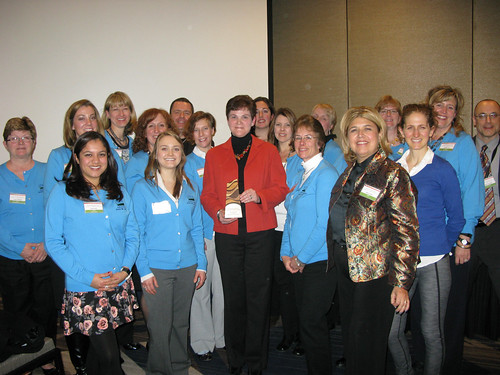
Posted by Anne Alonzo, Administrator of USDA's Agricultural Marketing Service, on February 26, 2015 at 1:00 PM

Deputy Secretary Krysta Harden (center, first row) is thanked by AMS Administrator Anne Alonzo (far right, first row) and members of the AMS research and promotion team for speaking at the diversity and inclusion training event on Feb. 18, 2015. USDA photo.
USDA Secretary Tom Vilsack, Deputy Secretary Krysta Harden, and all of USDA are committed to supporting the next generation of farmers and ranchers and promoting diversity and inclusion in all sectors of agriculture. As Administrator of the Agricultural Marketing Service (AMS), I had the pleasure of advancing these important priorities during our Research and Promotion Program (R&P) board diversity and inclusion training session, held in Northern Virginia prior to the 2015 Agricultural Outlook Forum.
Meeting participants – including more than 50 board members and board staff from 21 of the 23 R&P boards that we oversee, AMS employees, and representatives of Certified Nominating Organizations – gathered to tackle a serious issue: how to recruit talented and diverse board members who are representative of the industries they serve. The R&P boards allow farmers and ranchers to pool their resources and set common goals to develop new markets and strengthen current markets for the commodities they grow or handle.
The training focused on recruiting members from the next generation of farmers – people who will ensure that the boards help American agriculture remain an engine of economic opportunity for years to come. National Dairy Board member Brian Medeiros noted that the session “was a great way to bring R&P boards together to share successes and challenges as we work to include younger producers on our promotion Boards.”
We heard from a range of exciting presenters – Doug Swanson, 4-H national program manager with USDA’s National Institute of Food and Agriculture, led a session on recruitment; Michael Wallace, Walmart’s Director of Global Diversity and Inclusion, discussed unconscious bias and the way that inclusion increases innovation; Deputy Secretary Krysta Harden emphasized how important it is to find and develop new leaders; and Lilia McFarland, USDA’s New and Beginning Farmer and Rancher Coordinator, talked about how USDA resources can help new farmers and ranchers succeed. There was also a panel of board stakeholders who shared recruitment strategies, outreach opportunities, successful inclusion ideas, and best practices for success.
The training ended with a roundtable discussion that generated practical ideas for enhancing recruitment and diversity on the boards. As Cotton Board President and Chief Executive Officer William Gillon said, “I left with at least 12 new ideas to bring back to the Cotton Board. That is a good return.” And that was what this training was all about – giving the boards the tools they need to recruit talented, diverse, and multi-generational board members.
A key step toward this goal is the fundamental recognition that diversity and inclusion make the boards stronger. As United Soybean Board Chief Operating Officer Lisa O’Brien said, “The soy- checkoff family is committed to ensuring the U.S. soy industry thrives for generations to come. That means attracting our farmer-leaders of tomorrow. We can’t do that effectively without making sure that every soybean farmer in the nation knows of the opportunities to serve their industry.”
As one meeting participant noted, “If you’re at the table and everyone looks like you, how are you going to get those new ideas?”
I look forward to seeing how the boards will implement all that we learned. I also want to emphasize that AMS and USDA are committed to making progress in this area, which is why we created a number of outreach materials to help R&P boards with recruitment. We invite you to find out more by watching a short video on R&P diversity, learn how you can shape the future of agriculture by serving on a research and promotion board, or find out how to be a voice for your industry on one of our other councils, committees and boards.
Related Posts
Sulphur Caldron
From Yellowstone National Park:
Gases and popping bubbles create a marbling effect in this mud pot near Sulphur Caldron.
Gases and popping bubbles create a marbling effect in this mud pot near Sulphur Caldron.
Happy Birthday, Grand Canyon!
From Grand Canyon National Park:
From the snow covered North Rim - Happy Birthday to Grand Canyon National Park! May 15, 2015 is just around the corner when the North Rim reopens! Can't wait to see your smiling faces! -jp
From the snow covered North Rim - Happy Birthday to Grand Canyon National Park! May 15, 2015 is just around the corner when the North Rim reopens! Can't wait to see your smiling faces! -jp
Spacewalk
From NASA:
NASA astronaut Barry "Butch" Wilmore, Commander of Expedition 42 on Feb, 21, 2015 is caught by the camera as the Earth's surface passes by in the background. Wilmore and fellow astronaut Terry Virts (seen in the visor's reflection) completed a 6-hour, 41-minute spacewalk routing more than 300 feet of cable as part of a reconfiguration of the International Space Station to enable U.S. commercial crew vehicles under development to dock to the space station in the coming years.
NASA astronaut Barry "Butch" Wilmore, Commander of Expedition 42 on Feb, 21, 2015 is caught by the camera as the Earth's surface passes by in the background. Wilmore and fellow astronaut Terry Virts (seen in the visor's reflection) completed a 6-hour, 41-minute spacewalk routing more than 300 feet of cable as part of a reconfiguration of the International Space Station to enable U.S. commercial crew vehicles under development to dock to the space station in the coming years.
Waving Wheat Still Smells Sweet in Oklahoma
From USDA:

Posted by Wil Hundl, Oklahoma State Statistician, National Agricultural Statistics Service, on February 26, 2015 at 10:00 AM

Oklahoma Agriculture is diverse – both in the crops raised and in the farmers that work the land. Check back next week for another state spotlight from the 2012 Census of Agriculture!
The Census of Agriculture is the most complete account of U.S. farms and ranches and the people who operate them. Every Thursday USDA’s National Agricultural Statistics Service will highlight new Census data and the power of the information to shape the future of American agriculture.
Oklahoma consistently ranks in the top five states for beef cattle and winter wheat, but our agriculture is much more than just rolling fields of wheat and cattle. With more than 80,000 farms counted in the 2012 Census of Agriculture, Oklahoma remains in 4th position in the number of farms in the nation. The bulk of our farms are less than 500 acres in size, but contributed $2.2 billion dollars to the market value of agriculture products sold (including government payments).
The average age of farmers nationally and in Oklahoma is now 58.3 years, increasing in both since the last census. Here in Oklahoma however, this increase is happening at a significantly slower rate than the U.S. average.
Though wheat and cattle production continue to rank #1 and #2 as Oklahoma’s top commodity by value of production in year-over-year terms, we are also known for our hog production with 2.3 million hogs counted in the 2012 Census of Agriculture.
On the demographic side, we ranked second in the country for the number of American Indian principal farm operators (7,489) second only to Arizona. These operators own more than 1 million acres of Oklahoma farmland, and rent an additional 750,000 acres of the state’s 34 million acres of farmland.
Other top rankings for Oklahoma according to the 2012 census include:
- Fifth in the nation for the number of farms producing and selling value-added commodities, with 3,815 farms.
- Third in the nation for the number of farms that raised or sold veal calves with 889 farms.
- Fifth in the nation for the number of farms practicing rotational or management-intensive grazing, with 11,477 farms.
While Oklahoma might be better known for its oil and gas, 609 farms harvested biomass crops for use in renewable energy, the fifth highest number in the nation.
Our farmers also boast having the second largest inventory of on-farm horses and ponies in the nation. The only larger inventory is in our neighbor state, Texas.
As you can see, while Oklahoma is rightly known for its cattle and wheat, our agriculture is so much more than that. We are leading the nation in a number of other areas that continue to grow in importance for American agriculture.
Related Posts
Shining Mountains at Glacier National Park
From Glacier National Park:
Sometimes cell phones come in handy and motivate you to stop to enjoy the view. This morning, Glacier's shining mountains welcomed me on my drive to work. (ms)
Sometimes cell phones come in handy and motivate you to stop to enjoy the view. This morning, Glacier's shining mountains welcomed me on my drive to work. (ms)
Soil Moisture Mapper Antenna Deploys - YouTube
Video (1:46)
Soil Moisture Mapper Antenna Deploys - YouTube
Published on Feb 26, 2015
Get a behind-the-scenes look at the SMAP team at the moment of spacecraft antenna deployment, Feb. 24, 2015.
The Soil Moisture Active Passive mission will track soil moisture and the freeze-thaw state of the ground worldwide. The mission will help improve climate and weather forecasts and allow scientists to monitor droughts and better predict flooding caused by severe rainfall or snowmelt -- information that can save lives and property. In addition, since plant growth depends on the amount of water in the soil, SMAP data will allow nations to better forecast crop yields and assist in global famine early-warning systems. For more information, go tohttp://smap.jpl.nasa.gov/mission/desc... .
The Soil Moisture Active Passive mission will track soil moisture and the freeze-thaw state of the ground worldwide. The mission will help improve climate and weather forecasts and allow scientists to monitor droughts and better predict flooding caused by severe rainfall or snowmelt -- information that can save lives and property. In addition, since plant growth depends on the amount of water in the soil, SMAP data will allow nations to better forecast crop yields and assist in global famine early-warning systems. For more information, go tohttp://smap.jpl.nasa.gov/mission/desc... .
Soil Moisture Mapper Antenna Deploys - YouTube
Space station crew talks space with media - YouTube
Video (18:46)
Space station crew talks space with media - YouTube
Published on Feb 26, 2015
Aboard the International Space Station, Expedition 42 Commander Barry Wilmore and Flight Engineer Terry Virts of NASA discussed their daily regiment and research aboard the orbital laboratory in a pair of in-flight interviews Feb. 26 with Aviation Week, Space Technology and WAAY-TV in Huntsville, Alabama. Wilmore and Virts are in the midst of a trio of spacewalks to rig the station’s modules for the installation of new docking ports that will greet U.S. commercial crew vehicles in the future.
Space station crew talks space with media - YouTube
California Landscape is Mix of Green and Brown
From NASA's Earth Observatory:
California Landscape is Mix of Green and Brown
December rains and groundwater pumping keep vegetation looking green amidst a deep drought. Read more at http://
#earthrightnow
California Landscape is Mix of Green and Brown
December rains and groundwater pumping keep vegetation looking green amidst a deep drought. Read more at http://
#earthrightnow
Going-to-the-Sun Mountain
From Glacier National Park:
Going-to-the-Sun Mountain rises in splendor on a clear, but cold, winter day in the park. (mw)
Going-to-the-Sun Mountain rises in splendor on a clear, but cold, winter day in the park. (mw)
Loungin' in Grand Canyon #TBT
From the U.S. Geological Survey (USGS):
Loungin' in Grand Canyon #TBT — Today in 1919, the Federal Government turned Grand Canyon Monument (declared in 1908) into Grand Canyon National Park. Since the original establishment of this geologic wonder as a National Park it has been expanded over the years to include other nearby areas.
In this undated photo (likely very early 1900s though), we see a gentleman taking in the sights and relaxing from a hard days work...on the edge of a cliff. From this view, we are looking North across the Grand Canyon from a point on the east side of the Three Castles. Below is the canyon of Hance Creek; in the background, the Walhalla Plateau and its outlier, Wotan's Throne. The dark mass rising on the right is a shoulder of Coronado Butte.
#USGS #historic #NationalParks #GrandCanyon #cliff#historical #ThrowBackThursday #blackandwhite
Loungin' in Grand Canyon #TBT — Today in 1919, the Federal Government turned Grand Canyon Monument (declared in 1908) into Grand Canyon National Park. Since the original establishment of this geologic wonder as a National Park it has been expanded over the years to include other nearby areas.
In this undated photo (likely very early 1900s though), we see a gentleman taking in the sights and relaxing from a hard days work...on the edge of a cliff. From this view, we are looking North across the Grand Canyon from a point on the east side of the Three Castles. Below is the canyon of Hance Creek; in the background, the Walhalla Plateau and its outlier, Wotan's Throne. The dark mass rising on the right is a shoulder of Coronado Butte.
#USGS #historic #NationalParks #GrandCanyon #cliff#historical #ThrowBackThursday #blackandwhite
Wednesday, February 25, 2015
Braving Frigid Alaska Elements, Federal Workers Volunteer for the 'Toughest 300 Miles in Dog Racing'
From USDA:
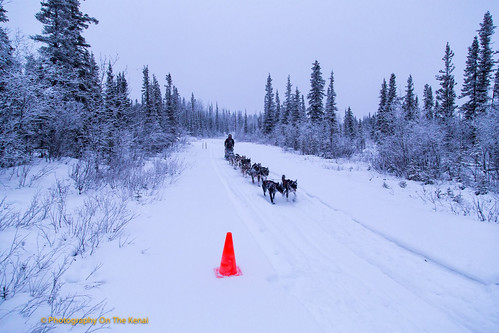
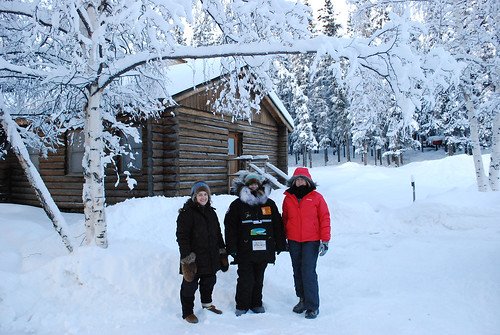
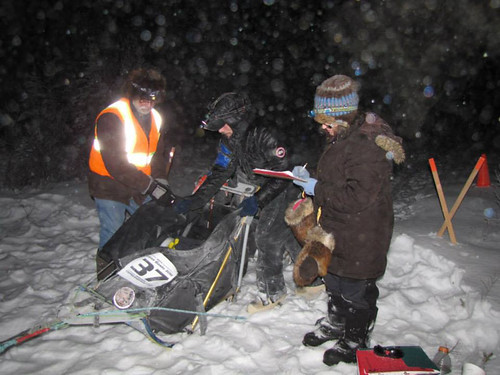
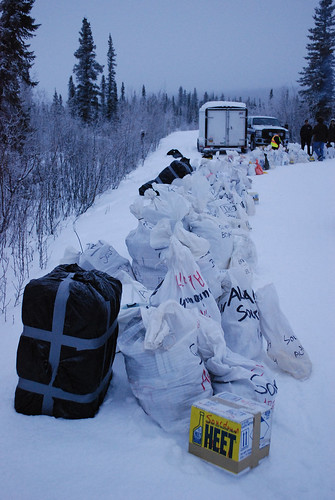
Posted by Jane Knowlton, Office of Communication, U.S. Forest Service, on February 25, 2015 at 4:00 PM

Musher Heidi Sutter and dog sled team approach the Sourdough checkpoint for a mandatory rest period during the Copper Basin 300 dog sled race. Federal agency land management volunteers met in Glenallen, population less than 500, to lend support for event success. (Photo courtesy of Photography on the Kenai/Robert Parsons)
Think Alaska in the winter: a large land canvas of powdery, granular or icy snow and days of often very, very cold weather.
With those conditions, it’s off to the races for some of the heartiest Alaskan sled dogs and volunteers like U.S. Forest Service employee Carol Teitzel, who works in the U.S. Forest Service Alaska Region and who lent her support to the excitement and challenge of this year’s Copper Basin 300 Sled Dog Race.
The 310-mile competition counts as a qualifying race for the nearly 1,000-mile Iditarod, the most popular dog sled race, and the 1,000-mile Yukon Quest, sometimes called the world’s toughest dog sled race.
The Copper Basin 300 is referred to as “the toughest 300 miles in dog racing.” If that’s true, then the Copper Basin 300 Sourdough checkpoint at Milepost 148 on the scenic Richardson Highway might possibly be termed the toughest checkpoint in dog racing. It is notoriously one of the toughest checkpoints to find volunteers to staff.
One of the coldest checkpoints on the trail, it offers very few amenities, and it’s void of communication with race central because of its location in a low hollow. For the last few years, land managers in the area have recognized these difficulties and have pitched in to find ways to be supportive of the community’s efforts and provide help where there’s been a need.

From left, Bureau of Land Management employee Marnie Graham, musher Heidi Sutter, and U.S. Forest Service employee Carol Teitzel meet to discuss learning opportunities for local youth to get involved in dog sled racing. (U.S. Forest Service)
“My husband and I are both part of the federal land management team here in Alaska, and I thought this was just one more way to enjoy the beauty of the land and to be part of a team to celebrate the races,” said Teitzel, a visual information specialist. “Interior Alaska is geographically different from southeast Alaska where I previously worked in the regional office. Winters here will dip in the minus 40- to minus 50-degree range. Just walking outside can cause injury if you are not prepared. But it is a way of life with winter being a key time for Alaskan celebrations and events.”
Volunteers provided satellite phones for communication with race central to relay important updates to anyone watching the race online or from afar. They also set up the checkpoint with warming tents, burn barrels, wood, and warm stew for the mushers. Volunteer checkers were available around the clock starting at 11:53 a.m. January 11 when the first musher arrived into the checkpoint, until 11:30 a.m. January 12 when the final musher departed.
Focusing on the conservation education mission of the race this year, Teitzel reached out to Heidi Sutter, a local Copper Basin teacher and musher, for more information on the sport and for ways to keep her grandchildren in the Lower 48 involved. Together, they drew on the Chugach Children’s Forest’s iTrec! Iditarod Trail to Every Classroom program.
“These workshops focus on the belief that students who are immersed in the interdisciplinary study of their own ‘place’ are more eager to be involved in the stewardship of their communities and public lands,” said Teitzel.

Bureau of Land Management volunteers Marnie Graham and Dennis Teitzel check in a racer at the Sourdough checkpoint for the Copper Basin 300 dog sled race in Alaska. (National Park Service)
Simplifying some of the program activities, Teitzel and Sutter covered many topics involved in dog sled racing including wilderness survival techniques, animal husbandry and applying math skills for racing requirements and tracking results. “The kids came to understand how to prepare for and run a race while also ensuring good environmental stewardship,” she said.
As a qualifier race for the Iditarod, the Copper Basin 300 has an international following on social media. Teitzel introduced a Twitter feed for this year’s competition that she hopes will bring in more volunteers and support for next year’s race.
The Sourdough checkpoint operations this year involved a cooperative effort with volunteers and staff from the Bureau of Land Management, Wrangell St. Elias National Park and Preserve, and the Ahtna Native Regional Corporation, in addition to the U.S. Forest Service Alaska Region.

U.S. Forest Service employee Carol Teitzel volunteered to manage the food drop located a quarter of a mile from the Sourdough checkpoint for January’s Copper Basin 300 dog sled race. A well-fed barrel fire nearby kept her and her homemade tamales warm and made quite a few new friends. (U.S. Forest Service)
Related Posts
At the Agricultural Outlook Forum, Prognosticators Peer Ahead to 2060
From USDA:

Posted by Wayne Maloney, Office of Communications, on February 25, 2015 at 10:00 AM

Tom Brown, Economist, Rocky Mountain Research Station's Social and Economic Values Group, Forest Service, USDA, Fort Collins, CO. outlined climate models during his panel presentation at the 2015 Agricultural Outlook Forum. USDA photo by Lance Cheung.
No one can say with certainty what the American climate will be like 45 years from now, but looking at climate models discussed at the Agricultural Outlook Forum last week in suburban Washington, D.C., the best prediction is that the American southwest will be drier, the northwest may get more rain and less snow, and the entire nation will see more climate variability. Weather swings, and their effect on production, will be more pronounced. Some areas may get too much rain in the winter and spring and not enough in the summer and fall. That’s a guess, but it’s an educated one.
A few things are fairly certain: There will be more people, and with a highly diffused American water management system, it will be a challenge to adapt. People will take priority over crops like rice. Every drop of water will count. It will be necessary for areas accustomed to getting much of their water from melting snowpack to store more water in reservoirs, and water now discarded as “dirty” or “grey” can no longer be flushed away.
The current drought monitor shows a very dry California and the projection is that water demands will continue to increase in Texas and the Southwest, driven by a rising population level and booming resource development activities. A climate model discussed at the forum shows that by 2060 average rainfall could drop in parts of the southwest by as much as 50 percent, compared to current totals.
Fortunately, there are ways to get more out of each gallon of water and the savings add up quickly. Dr. Glenda Humiston, State Director for USDA Rural Development in California, told the audience that technology such as sensors on vines and trees, can cut water consumption by 10 percent while increasing yield by the same amount. Nanotechnology and biobased product development along with a credit market can all make contributions to what she called “layered tools” to address water shortages. Additionally, investing in forest health projects could substantially increase the amount of water available. Healthy forests are more efficient when it comes to filtering water.
In conclusion, she said partnerships are key to addressing the challenges of a variable climate: Solutions include more storage and retention of water, better water management and what she termed the “triple bottom line” – People, Planet and Prosperity.
Related Posts
Subscribe to:
Posts (Atom)













